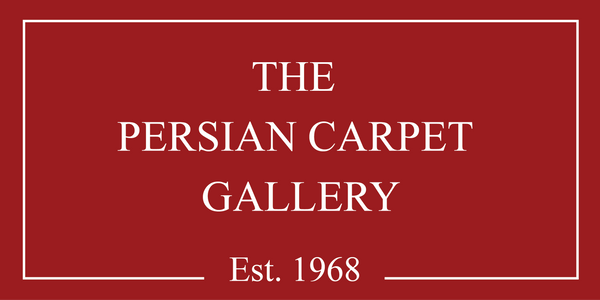Blogs
Silk Carpet with Arabesques in The Victoria and Albert Museum in London
The Silk Carpet with Arabesques, originating from Central Persia in the early 17th century, is a stunning example of Safavid-era craftsmanship. Currently housed in the Victoria and Albert Museum, London, this luxurious carpet features 400,000 knots per square meter, with a silk warp, silk weft, and a silk pile enriched with gold and silver threads.
Belonging to the ‘Polonaise’ carpet group, its name stems from a historical misattribution in 1878, when several Persian rugs from the Polish Prince Czartoryski’s collection were mistakenly believed to be of Polish origin. Although scholars corrected this by 1891, the term ‘Polonaise’ persists.
Experts debate its precise origin, with Arthur Upham Pope suggesting it was woven in Joshagan, though its design sets it apart from other carpets in the same category. This masterpiece remains a testament to the artistic and technical brilliance of 17th-century Persian weavers.
Floral Mashhad Carpet in Museo Poldi-Pezzoli, Milan
This exquisite late 16th-century Persian carpet, now housed in the Museo Poldi-Pezzoli in Milan, exemplifies the artistic excellence of the Safavid era. Originating from East Persia, it features a dense Persian knot count of 410,000 knots per square meter and a rich wool pile.
While Herat was historically considered the primary hub of carpet weaving in Khorasan, the sacred city of Mashhad also played a significant role. As a major pilgrimage center, Mashhad fostered a thriving carpet industry, supported by offerings made at its holy shrines.
The carpet's design is a breathtaking display of floral motifs, intricate arabesques, and stylized palmettes, arranged in an organic, asymmetrical pattern. These elements extend into the wide border, creating a sense of movement and depth. This masterpiece remains a testament to the enduring beauty and cultural significance of Persian weaving.
Floral Carpet with Arabesques – A Masterpiece of Persian Weaving
This exquisite 16th-century Persian rug from Mashhad is a testament to the golden age of Persian carpet weaving. Commissioned by Shah Abbas the Great, it confirms Mashhad’s prominence as a weaving center during the Safavid era. Measuring 560 x 354 cm, the rug features an impressive density of 490,000 knots per square meter, with a wool pile and flat-woven silver thread, creating a stunning relief effect. Its intricate floral patterns and arabesques showcase Persian artistic brilliance. Remarkably well-preserved, this masterpiece remains a symbol of elegance, craftsmanship, and cultural heritage, housed in the Shrine of the Mosque at Mashhad.
The Hunting Rug
Discover the exquisite Hunting Carpet from 16th-century North-west Persia, housed at the Museo Poldi-Pezzoli in Milan. This finely crafted Persian rug features 409,200 knots per square meter, with silk warp, cotton weft, and wool pile. Showcasing a central medallion, hunters, and vibrant animal motifs, it embodies Persian artistry. Once owned by the Italian Royal Family, this masterpiece endured a fragmented past but remains a symbol of cultural heritage and craftsmanship. Perfect for enthusiasts of Persian rugs and historic textiles.
“Garden” Carpet: A Masterpiece of Persian Artistry
The “Garden” carpet, originating from northwest Persia in the early 16th century, is the earliest known example of the garden design. Likely crafted in Heriz, it features a vibrant layout of canals with fish, ducks, medallions adorned with birds, deer, and blossoms, all framed by a floral border. Woven with wool, cotton, and silk, it boasts intricate craftsmanship with 307,200 knots per square meter. This historic masterpiece, once part of the Figdor Collection, now resides in the Österreichisches Museum für angewandte Kunst in Vienna.
The Persian Carpet: Up to 1800
Dating Persian Rugs: An Insight
Many Persian rugs feature inscriptions within a cartouche, often revealing the name of the commissioner, the artist, or the factory and year of creation. These inscriptions typically use the Hegira calendar rather than the Iranian calendar. To convert a Hegira date to the Christian era, subtract 3% of the inscribed date and add 622. The Hegira calendar begins with the Prophet Mohammed’s migration from Mecca, marking the start of the Islamic calendar.
The Art of Dyes in Persian Carpets
The vibrant hues of Persian carpets showcase the skill and artistry of Iranian artisans. Known for their mastery in blending and harmonizing colors, they create rich, warm, and sophisticated shades that endure through time. For centuries, the dyes used were sourced exclusively from nature, including plants and animals. In some traditional villages, this age-old practice continues, preserving the legacy of natural dyeing.








